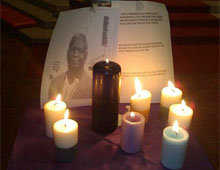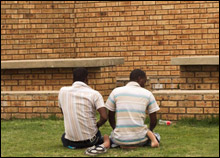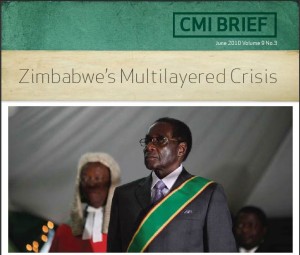
Front illustration from CMI Brief -June 2010 Vol 9 No 3
“The Zimbabwean crisis illustrates the complexity of attempting to defeat a party of liberation through elections in a region in which the legacies of anti-colonial struggles still have a great deal of resonance. Within this resonance, the demands for human rights and political democratisation can be constructed as an extension of a Western regime change agenda. The crisis also reveals the limitations of SADC as a regional organisation for dealing with ruling parties that refuse to adhere to its formal democratic principles by resting their tenure on a liberation struggle and coercion. With these limitations the Zimbabwean opposition is forced to fight for space within the GPA in hopes of creating the conditions for an election that would allow for the possibility of a power transfer…” [Click here to download CMI Brief]
[This CMI Brief is part of the CMI project Election processes, liberation and democratic change in Africa led by Professor Lise Rakner and Professor Helge Rønning.]
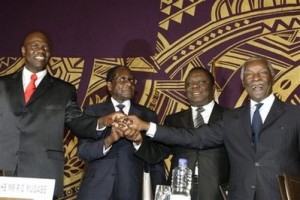
From left to right: Arthur Mutambara, Robert Mugabe, Morgan Tsvangirai and Thabo Mbeki
First published on the Nordic Africa Institute website
Summary
The South African led mediation on Zimbabwe has been received with mixed result both within in the country and internationally. Born out of the violent refusal of a party of the liberation movement to accept its first electoral defeat since independence in 1980, the regional mediation, through the instrument of the Global Political Agreement signed in September 2008, sought to put in place a temporary inclusive government that would attempt to stabilize the country politically and economically, and prepare the ground for an election result that would be accepted by all the major contenders. With the GPA still in play the results thus far have been mixed, but with a growing apprehension around the slow movement in implementing its central tenets. (Read more…)
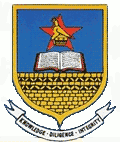 Security Sector Reform (SSR) is a concept that gained currency as a development agenda in the aftermath of the cold war. It refers to a host of reform interventions related to the reform of sections of the public sector engaged in the provision of both internal and external security. These include the defence forces, intelligence services, police, the judiciary and the prison service. SSR aims at providing effective state and human security through democratic governance, respect for the rule of law and human rights. Zimbabwe has a complex security sector that emerged from a merger of former belligerents in the war of liberation, namely the Rhodesia security forces, Zimbabwe People’s Revolutionary Army (ZIPRA) and Zimbabwe National Liberation Army (ZANLA). SSR in Zimbabwe is therefore largely influenced not just by the dynamics of the post-Cold War politics but also by the legacy of the armed liberation struggle. [Download full article]
Security Sector Reform (SSR) is a concept that gained currency as a development agenda in the aftermath of the cold war. It refers to a host of reform interventions related to the reform of sections of the public sector engaged in the provision of both internal and external security. These include the defence forces, intelligence services, police, the judiciary and the prison service. SSR aims at providing effective state and human security through democratic governance, respect for the rule of law and human rights. Zimbabwe has a complex security sector that emerged from a merger of former belligerents in the war of liberation, namely the Rhodesia security forces, Zimbabwe People’s Revolutionary Army (ZIPRA) and Zimbabwe National Liberation Army (ZANLA). SSR in Zimbabwe is therefore largely influenced not just by the dynamics of the post-Cold War politics but also by the legacy of the armed liberation struggle. [Download full article]
Article by Munyaradzi Nyakudya – History Department, University of Zimbabwe
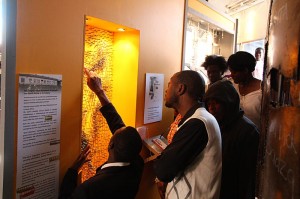
Migration - installation.
The image to the left depicts visitors viewing an art installation at the Refugee Exhibition. Please visit our photo gallery to view more photos from the exhibition.
This is an interactive exhibition with recordings from the children themselves. It highlights the plight of the Forgotten Children who fled Zimbabwe’s political turmoil, in search of a better life, peace and security. Seen through the eyes of the children, you will be taken on a journey to share their experiences and amazing stories of hope and determination to succeed despite the challenges facing them.
Exhibition opening times: Monday to Friday: 8am – 4pm
Venue: Albert Street School, cnr Albert Street and Kruis,
opposite J’Burg fire station, Marshalltown, Johannesburg
The Refugee exhibition was organised by the Solidarity Peace Trust in partnership with the Central Methodist Church (Johannesburg). Photos of the exhibition are credited to Laurin Berger. For more information about the exhibition, please contact Selvan Chetty.
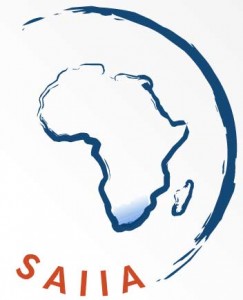
Article by Sabelo J. Ndlovu-Gatsheni - Senior Researcher, South African Institute for International Affairs (SAIIA), Johannesburg
Zimbabwe is currently undertaking a constitution making process partly to fulfil provisions of the Global Political Agreement (GPA), partly to afford citizens an opportunity to contribute to the making of a ‘democratic indigenous’ constitution and partly to afford the nation an opportunity to transcend the past of violence, authoritarianism, impunity and arbitrary rule. Since 1980, Zimbabweans have not had an opportunity to actively take part in constitution-making. The constitutional process that ended in the ‘no vote’ in February 2000 was a lost opportunity largely because of the interference of the ruling elites with the views of the people.
Since 2000 civil society organisations particularly the National Constitutional Assembly (NCA) has not rested in putting the issue of the constitution at the centre of any possible transition or change of government in Zimbabwe. To win the hearts and minds of the electorate, political gladiators particularly those hailing from the opposition have not stopped promising Zimbabweans a new constitution for a new Zimbabwe if elected as new government. The former ruling party ZANU-PF seemed to be happy with the current constitution that gave its leader President Robert Mugabe sweeping executive powers. It had to be dragged kicking and screaming to accept the current process of constitution-making. This was clearly demonstrated by some ZANU-PF activists who tried to disrupt the first meetings organised to launch the new constitution-making process in 2009.
Why do Zimbabweans need a new constitution? The decolonisation of Rhodesia took the form of a negotiated settlement held at the Lancaster House in London where a ceasefire constitution was concocted without the participation of the people. ZANU and ZAPU that united under the Patriotic Front (PF) to negotiate for independence were not elected by the people. Their legitimacy was drawing from their active prosecution of the armed liberation struggle. So, between 1980 and 1990, Zimbabwe was governed under a ‘ceasefire constitution’ otherwise known as the Lancaster House constitution. Between 1990 and 2010, Zimbabwe has been governed under what can be correctly termed a ‘ZANU-PF constitution’ a term that was also used by Jonathan Moyo in 2009.
This constitution came into being as a result of a series of partisan-motivated amendments that have reached a total of seventeen or more. These amendments have resulted in conflation of the state with ZANU-PF, reduction of Zimbabwe to a party-state and conversion of the nation into a party-nation. In this scheme of things, President Mugabe and ZANU-PF have been elevated into national symbols. Opposing Mugabe and ZANU-PF is seen as being unpatriotic and being an enemy of Zimbabwe. Membership to ZANU-PF and loyalty to President Mugabe often came with immunity from prosecution or benefiting from presidential pardons whenever convicted for violence and other offences. In short, the need for a new constitution is a desire to replace both the ceasefire constitution and the ZANU-PF constitution that have combined to plunge Zimbabwe into its worst governance crisis at the beginning of 2000.
The key challenge to the drive for a new people-driven constitution is that since 2000, the process has been deeply imbricated into partisan politics pitting the MDC political formations against ZANU-PF. This scenario has complicated the definition of ‘the people’ beyond belonging to ZANU-PF or MDC. In the last ten years, one of the less written about national crises was that of the ‘absence of the people’ beyond those active in MDC or ZANU-PF. By ‘the people,’ I mean a collectivity in pursuit of common political, economic and social goals that cut across gender, class, race, generation and ethnicity. Between 2000 and 2008, the nation was deeply polarised to the extent that the low intensity war pitting supporters of ZANU-PF and MDC was inevitable. There were no ‘Zimbabweans’ to talk about beyond political party identities. The political gladiators capitalised on this absence of the people to totally hijack the constitution-making process reducing it to a political exercise that needed political parties’ consensus rather than people’s participation and referendum.
The result was the Kariba Draft Constitution agreed secretly among three political parties of ZANU-PF, MDC-T and MDC-M. It is this party-concocted document that ZANU-PF has been accused of trying to push forward as the blue-print for a new constitution of Zimbabwe. MDC-T and MDC-M are trying to save face by dissociating themselves from this secretly drafted version of a constitution. NCA and other civil society groups that initiated the crusade for a new constitution prior to 2000 have lost the centre stage in the making of the constitution. Civil society is now participating in the constitutional outreach activities underway in Zimbabwe as invited guests of political gladiators. In a deeply polarised terrain that unfolded between 2000 and 2008, even civil society was bifurcated into ZANU-PF and MDC affiliation, giving way to the supremacy of political parties as the sole representatives of the people.
As the constitutional outreach programme spreads its tentacles into communities to tap into citizens’ views, one is left wondering if finally ‘the people’ have been liberated from the narrow identities of belonging to political parties rather than to the nation of Zimbabwe. This crisis plays into the hands of the political actors in ZANU-PF and MDC who are comfortable with being defined as representing the people. Are there no people outside ZANU-PF and MDC who are loyal Zimbabweans? How can a people defined by political belonging help in crafting a national constitution? In other words, how can ZANU-PF and MDC people come up with a national constitution? How can such a constitution escape the inevitable constraints of partisan opinions? The Kenya example must be avoided where partisan squabbles led to the failure to come up with a people-driven constitution. To transcend this hurdle, Kenyans had to have a select committee of experts standing in for the people to engage in a secondary process of harmonising the divergent views into a draft national constitution that will then be opened to a referendum. Can Zimbabwe escape this route?
There is a danger of the ongoing constitution-making process remaining hostage to the friction between partisan politics of the day and the horizon of a new Zimbabwe. Only a people acting as a national collectivity putting the nation first and political belonging second are able to come up with a new national constitution working closely with their representatives. An aggrieved, injured, unreconciled and unhealed society, can easily misinterpret the constitution-making process for a forum where they have to vent anger and the whole exercise ending up constrained by short-termism.
by Sabelo J. Ndlovu-Gatsheni – Senior Researcher, South African Institute for International Affairs (SAIIA), Johannesburg





